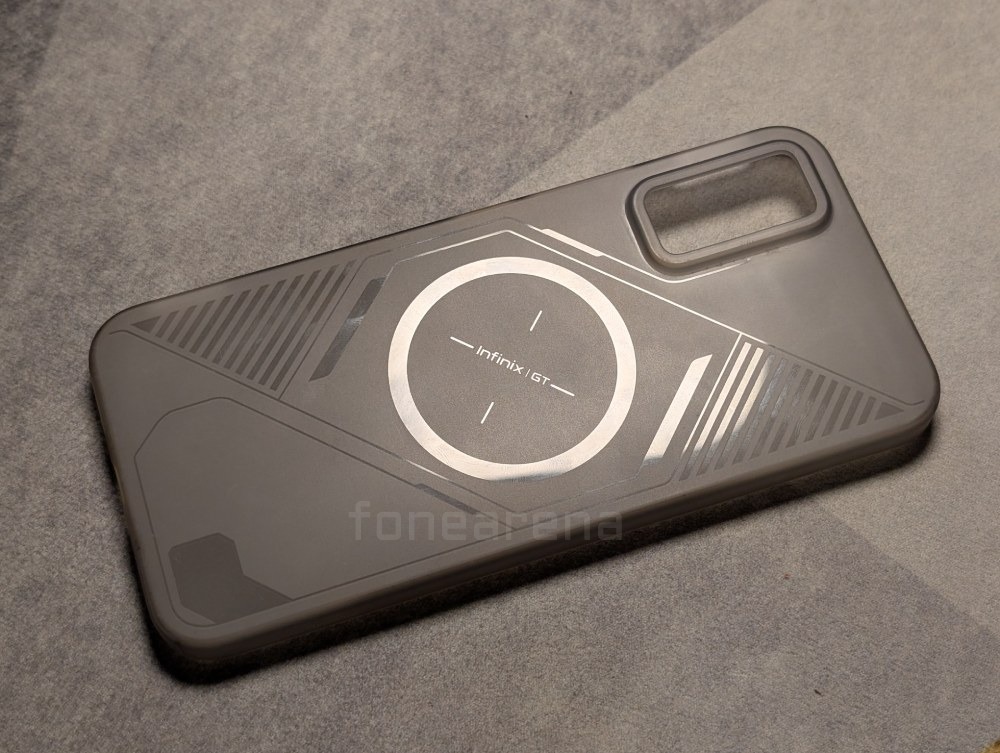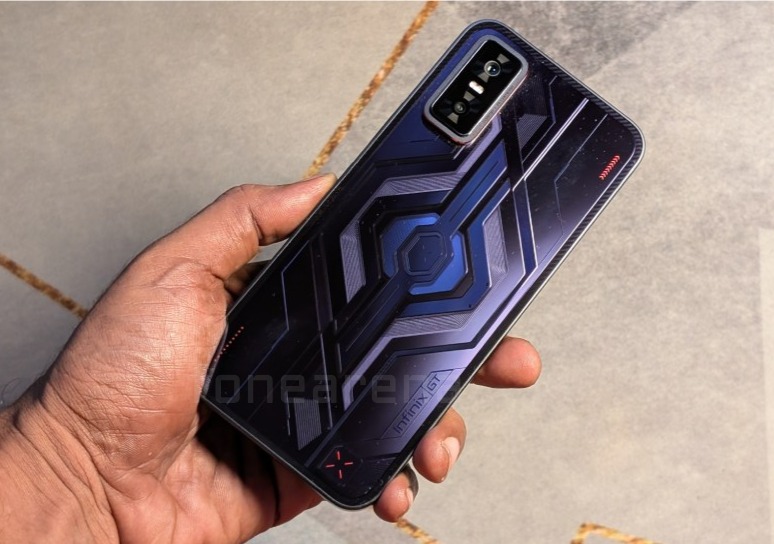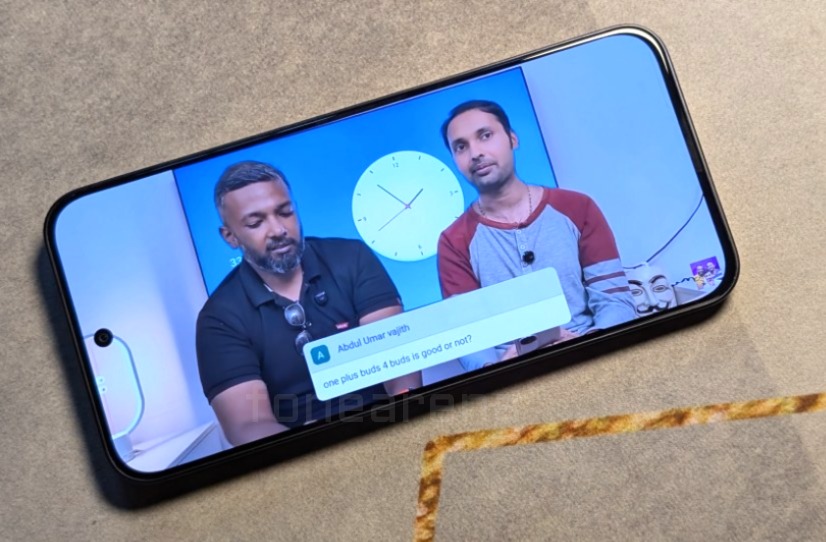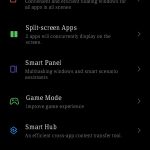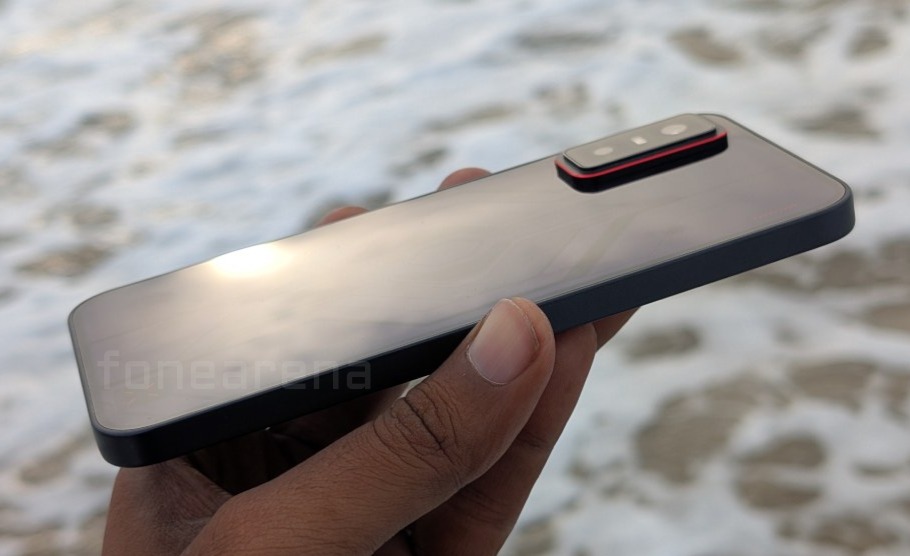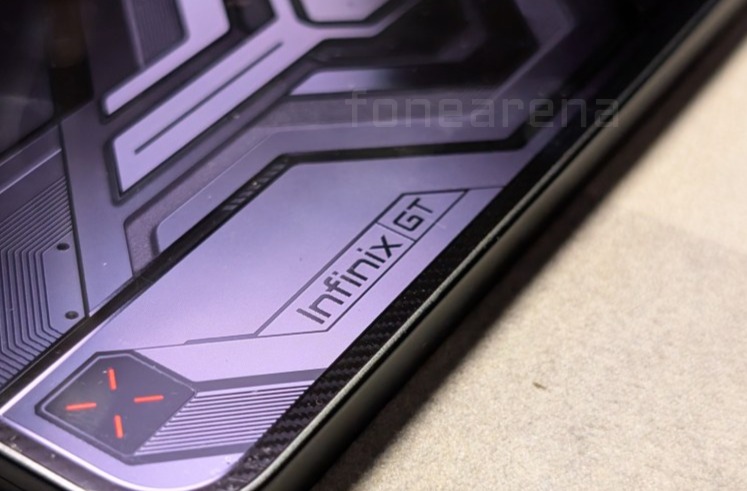
Infinix is undergoing a significant transformation. Historically recognized as a volume player in the budget segment, the brand has initiated a remarkable shift, particularly since the advent of its XOS 15 software. The praise from the tech community is not unfounded; our own experience confirms that the software has evolved into a genuinely seamless and feature-rich platform. It is within this exciting new chapter that the Infinix GT 30 Pro makes its debut, not merely as another smartphone, but as a definitive statement of intent. Billed as an “esports-ready” powerhouse, it leverages a formidable spec sheet—including a 1.5K 144Hz flat display, console-style gaming triggers, and a “Cyber Mecha” design—to challenge the mid-range performance crown. This device has managed to genuinely surprise even our seasoned team, proving that Infinix is not just participating in the high-performance market—it’s ready to compete.
Unboxing and In-Box Contents
Infinix maintains its consumer-friendly tradition of providing a comprehensive package, ensuring users are fully equipped from the moment they open the box.
- The Device: Infinix GT 30 Pro (12GB RAM, 256GB storage variant) in Dark Play color.
- Charging Brick: A 45W wired charging adapter.
- Cable: A standard USB Type-C cable.
- Protection: A high-quality protective case that is thoughtfully designed to complement the phone’s aesthetic.
- Utilities: SIM Ejector tool, user guide, and warranty information.
Design and Build Quality: The “Cyber Mecha 2.0” Experience
The defining physical characteristic of the GT 30 Pro is its “Cyber Mecha 2.0” design. Upon first removing the included case, the aesthetic is immediately reminiscent of a Nothing Phone, sharing similar curves, a plastic frame, and bezel structure. Despite its plastic construction, the build quality feels robust and premium, with a pleasant matte finish on the frame that resists fingerprints.
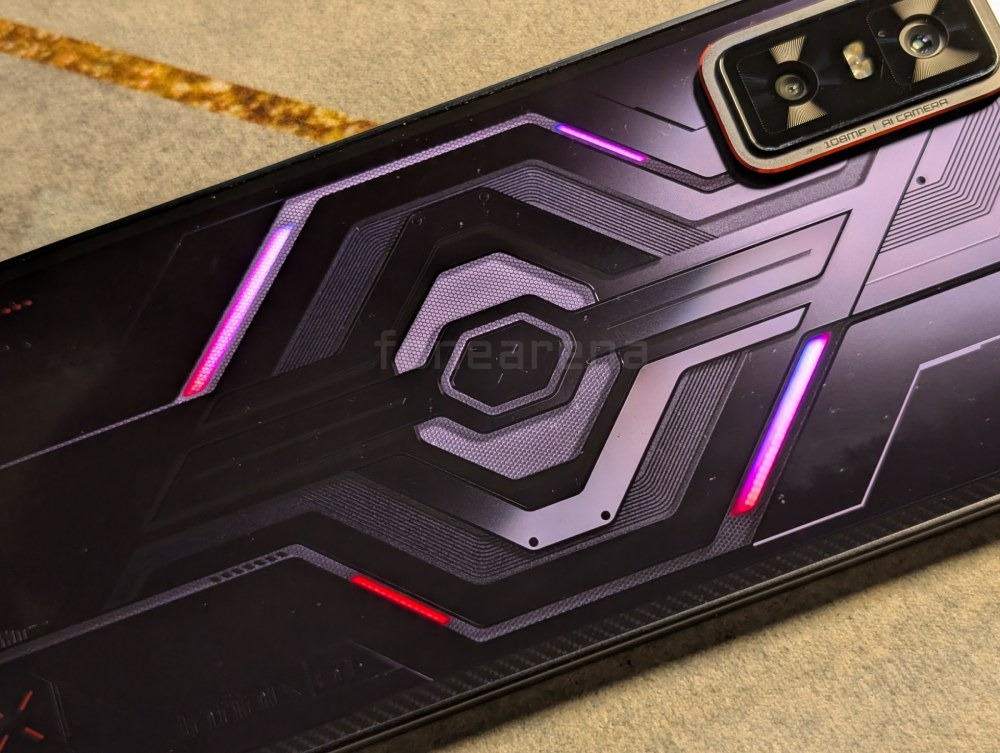
Our “Dark Play” review unit features a striking back panel with full RGB lighting that truly comes alive at night, though the glossy surface is a magnet for smudges. The alternative “Blade White” variant offers a more subdued single-color light, but may present an even more elegant look in person.

Infinix has loaded the design with meticulous details. A vibrant accent color on the power button adds a touch of flair, while a carbon fiber-like texture surrounds the camera module, enhancing its aggressive, game-centric look. Antenna cutouts are absent, a clean result of the plastic frame construction. The device feels secure and comfortable in hand, a deliberate choice for extended gaming sessions. For durability, the screen is protected by Corning Gorilla Glass 7, and the entire phone carries an IP64 splash-proof rating.
Port and Button Layout
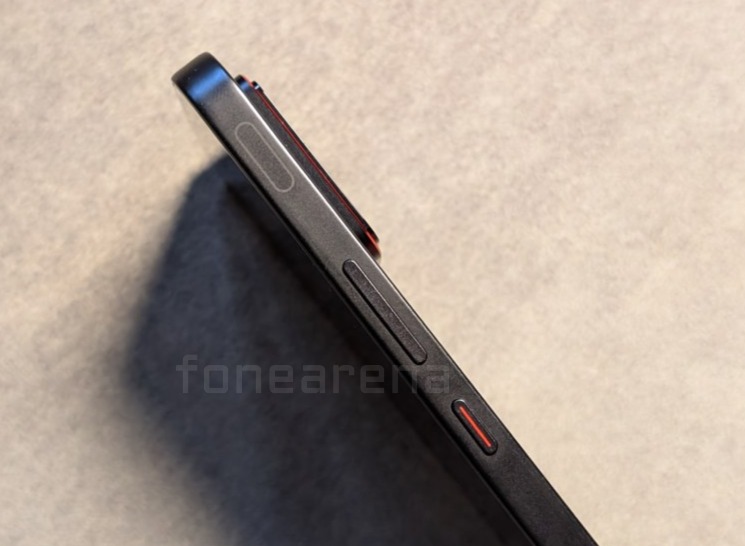
Right Side: The volume rocker sits above the accented power button. The two touch-based gaming triggers are also located on this side.

Left Side: The left side is kept completely clean for an uninterrupted grip.
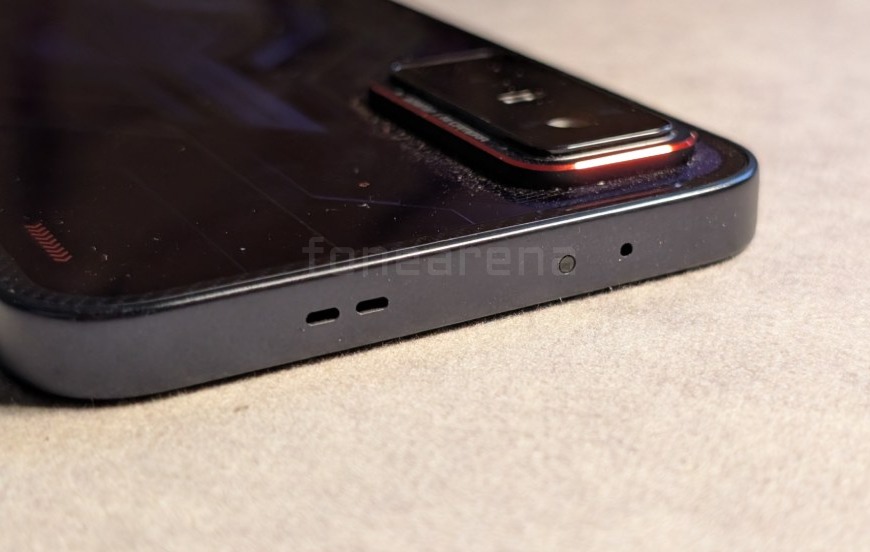
Top: The top edge houses an IR blaster, a speaker grille for the stereo setup, and a secondary microphone vent.
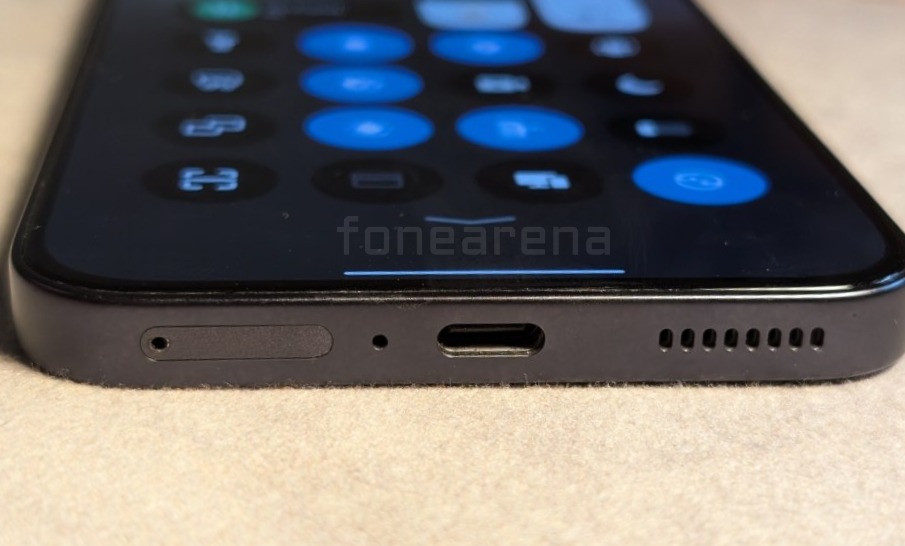
Bottom: The bottom features the dual SIM tray (with no expandable memory slot), the primary microphone, a USB Type-C port, and the main speaker grille.
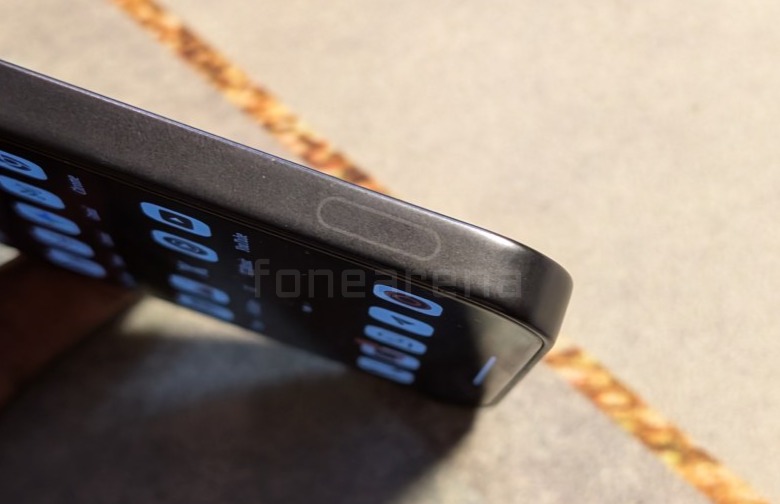
Adaptive LED Lights and Gaming Triggers
A key interactive feature is the “Adaptive LED Lights” system on the rear panel. It offers 10 distinct lighting modes for various notifications and scenarios. A simple shake of the phone awakens the lights, and enabling “Party Mode” synchronizes the light pulses with your music, creating a vibrant, immersive effect.

However, the true standout for gamers is the inclusion of customizable, touch-based gaming triggers. Marketed as “console-level,” these triggers offer deep software customization. You can create multiple presets for different games; for instance, we found assigning one to ‘scope’ and the other to ‘shoot’ in BGMI to be highly effective. They also double as system shortcuts. Holding a single trigger can initiate a screen recording, while double-tapping can be set to launch the camera or control media playback. The haptic feedback on the triggers is superb, providing a satisfying tactile response that makes them feel like a genuine hardware feature rather than a gimmick. Generally, the overall haptic engine is near flagship-grade and deserves high praise.
Display Analysis
The GT 30 Pro is fronted by an expansive 6.78-inch flat AMOLED display with a 1.5K resolution. The screen is geared for high-performance gaming, boasting a fluid 144Hz refresh rate and an incredibly responsive 2160Hz touch sampling rate. It also features 10-bit color depth for rich and vibrant visuals.
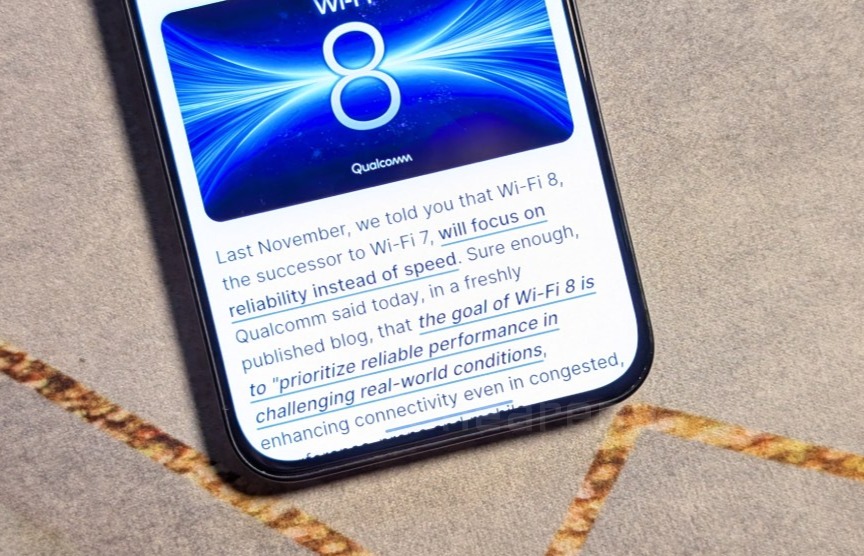
The bezels are not perfectly symmetrical; the side and top bezels are minimal, while the chin at the bottom is slightly larger. This is a common design trait, and in our opinion, it does not detract from the superb viewing experience. The display’s most impressive feature is its brightness. With a claimed peak brightness of 4500 nits, outdoor visibility is outstanding. Furthermore, it incorporates a hardware-level low blue light solution to mitigate eye strain during prolonged gaming sessions. Just the ambient light sensor, because it is done in software, is slow to react in many situations where the light becomes too harsh.

Core Performance and Hardware
Under the hood, the GT 30 Pro is a performance beast. It’s powered by the MediaTek Dimensity 8350 Ultimate chipset, which achieves a formidable AnTuTu score of over 1.5 million. This is complemented by a generous 12GB of the latest LPDDR5X RAM and 256GB of high-speed UFS 4.0 storage.
In day-to-day use, the phone is exceptionally fluid. The operating system is so well-optimized for the hardware that we disabled the “Memory Fusion” (virtual RAM) feature and experienced no discernible drop in speed or multitasking capability.
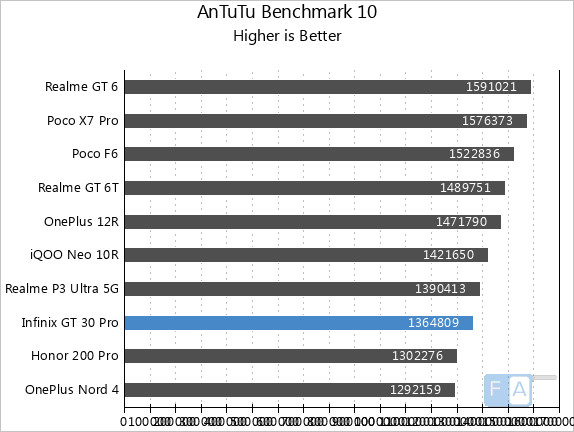
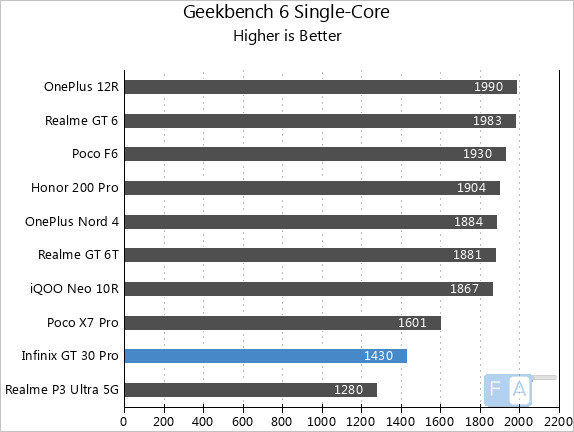
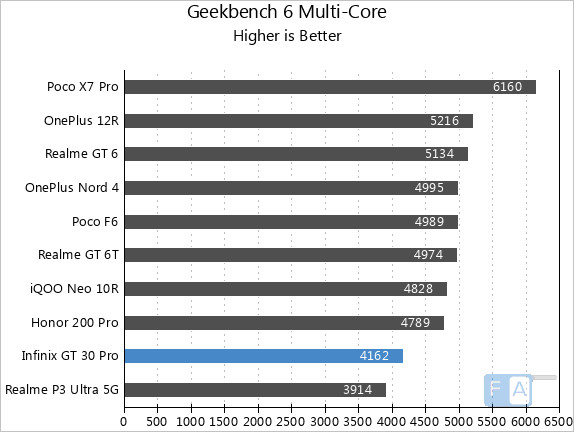
Gaming Performance and Thermal Management
This device is unapologetically marketed as “esports-ready,” with its 120 fps BGMI capability being a major selling point. In our extensive testing, the in-game settings correctly display the 120 fps option, and the enhanced smoothness is immediately palpable during gameplay. The combination of the high refresh rate display and responsive triggers makes for a genuinely fun and competitive gaming experience.
The most impressive engineering feat, however, is the thermal management. Infinix has integrated a vapor chamber cooling system that is reportedly 20% larger than in previous generations. The results are tangible. After a continuous 35-minute BGMI session in a non-air-conditioned room, the device remained remarkably cool, exhibiting only a “gentle warmth to show that it’s alive.” This is a significant achievement, especially when compared to other devices in its price bracket which can exhibit noticeable thermal throttling under similar sustained loads.
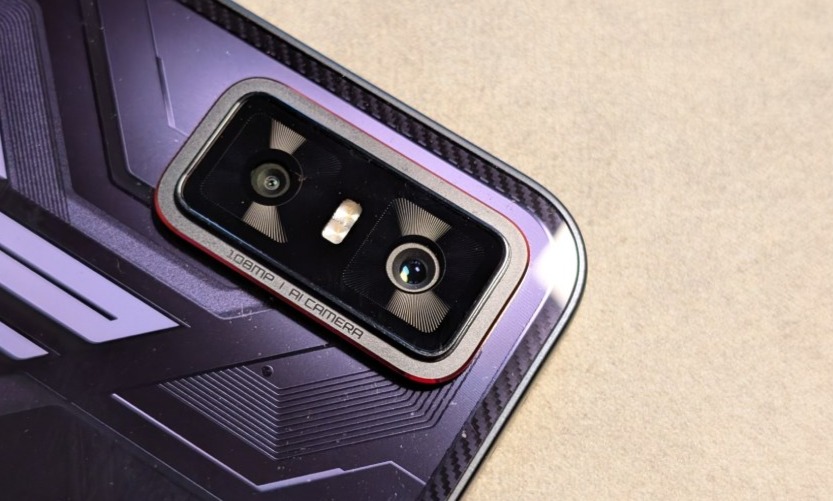
Camera System: A Detailed Breakdown
For a gaming-centric device, the camera system is surprisingly robust, though it comes with one significant compromise.
- Main Sensor: 108MP primary camera.
- Ultra-Wide Sensor: 8MP ultra-wide camera with an f/2.2 aperture.
- Front Sensor: 13MP front-facing camera.
The most significant compromise is the lack of Optical Image Stabilization (OIS). While its Electronic Image Stabilization (EIS) is serviceable, this reliance on software means that low-light photos are more susceptible to motion blur, and videos shot while walking will exhibit more noticeable jitter compared to OIS-equipped rivals. Still the night mode shots came out really well, as the primary sensor shines in the samples posted below.
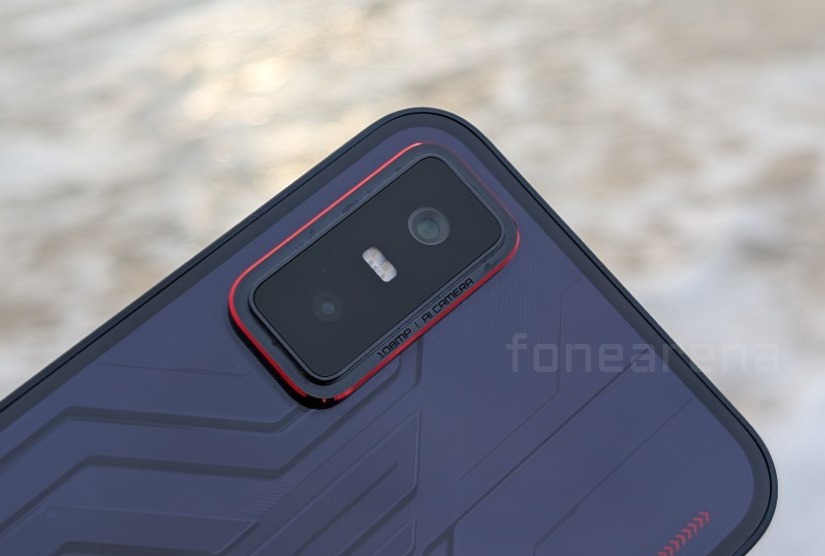
Photography Performance
Despite the lack of OIS, the photo quality from the 108MP main camera is “next level” and a genuine surprise. It performs admirably in both bright daylight and challenging low-light scenarios, producing sharp, detailed images. The image processing is particularly impressive, even managing to capture visible clouds at night in one of our test shots. Users can shoot in the full 108MP resolution for maximum detail, or utilize a 3x in-sensor zoom that yields good quality results. The 2x portraits are also quite pleasing. The Super Macro mode utilizes the 8MP ultra-wide sensor; the results are serviceable but “just average,” though they hold up reasonably well in low light for an 8MP sensor.
Videography Capabilities
The GT 30 Pro offers a versatile range of video recording options.
- The primary sensor can shoot at up to 4K 60fps.
- The ultra-wide sensor is capable of 2K resolution.
- The 13MP front camera is a strong point, offering crisp 4K video at 30fps.
For low-light selfies and vlogging, the front camera cleverly utilizes the screen’s brightness as a flash to create more favorable lighting, and the results look good. However, we did observe some noticeable lens flare when recording video in 4K resolution. Don’t expect the same great results as the stills, because this is a tough job for the chip and the price segment as well. The same dynamic range is not possible in video, that you get in multi-frame processing with photos.
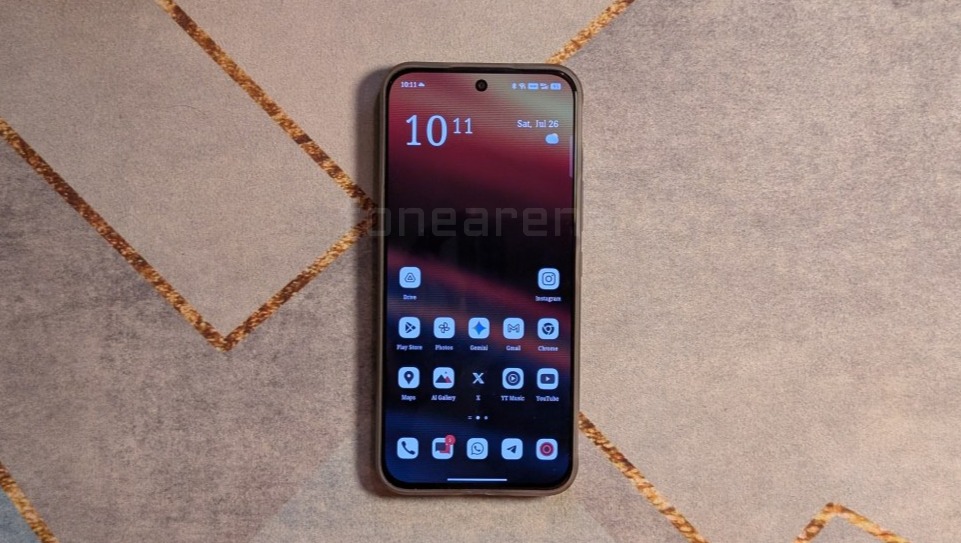
Software, UI, and AI Features
The GT 30 Pro runs XOS 15.0.3, based on Android 15, and Infinix promises two major OS updates and three years of security patches, ensuring its longevity. The user experience is exceptionally smooth, marking a significant step up from older models that suffered from lag on less powerful hardware. The UI is clean and incorporates modern features like a “dynamic bar” (similar to Apple’s Dynamic Island) for live alerts and notifications.
Thoughtful utilities are also present, including a native FM radio app and an IR blaster, which is neatly integrated into the quick settings panel rather than a standalone app.
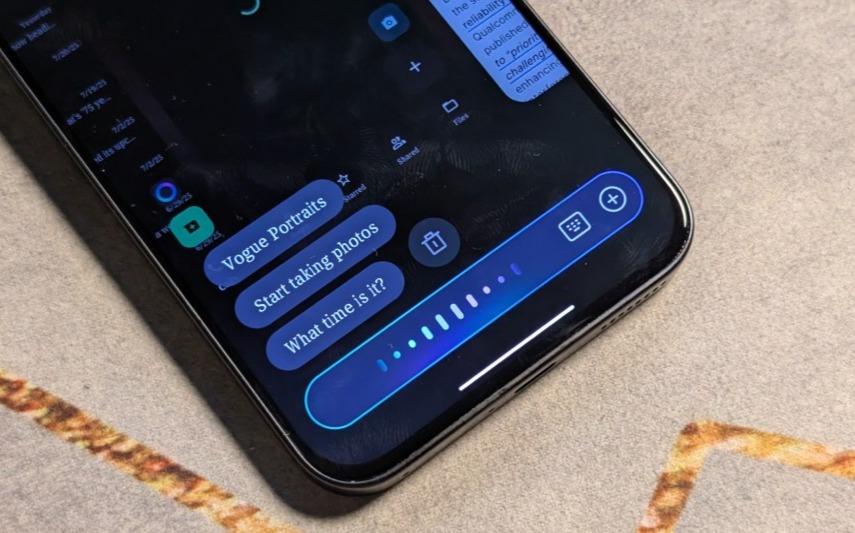
The phone comes equipped with the Infinix AI Folax Voice assistant. The onboard AI functionalities, such as generative photo editing, run significantly faster and more smoothly on the powerful Dimensity 8350 processor compared to other Infinix models. A major advantage is that all these AI tools are completely free, a stark contrast to some premium brands that are moving towards subscription models for similar features.

Connectivity, Calling, and Multimedia
The core communication experience is flawless. We faced no issues with calls; the earpiece is loud and clear, and the stereo speakers (powered by DTS sound) work well for speakerphone conversations. The software provides native call recording and satisfying haptic feedback for call connection and disconnection. The phone’s SAR value is commendably low at 0.861 W/kg for the head and 0.826 W/kg for the body. NFC is also included for contactless payments.
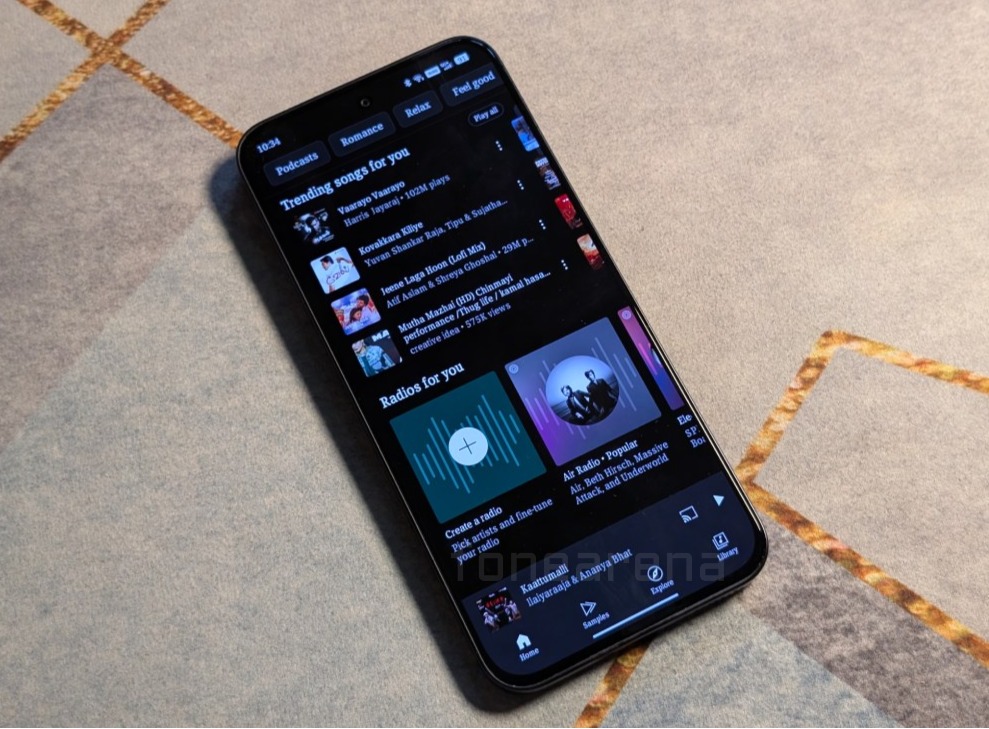
While general multimedia consumption is excellent thanks to the vibrant display and loudspeakers, we did observe a slight, occasional stutter during 4K media playback. This appears to be a known quirk of some Dimensity chips compared to their Snapdragon counterparts in handling high-bitrate video decoding.
Battery Life and Charging
The substantial 5500mAh battery delivers solid longevity. During our testing, we consistently achieved 3 hours of screen-on-time (SOT) with 50% battery remaining. This projects to a comfortable 6 hours of SOT with casual usage on a 5G network. For sessions with mixed heavy gaming, users can expect a still-respectable 4 to 5 hours of SOT.
The phone supports multiple charging methods:
- Wired Charging: 45W fast wired charging, which can achieve a full charge in approximately one hour.
- Wireless Charging: 30W wireless charging, a rare feature in this price segment.
- Bypass Charging: This intelligent feature powers the phone’s motherboard directly from the charger during gaming, bypassing the battery to minimize heat generation and prolong battery health.
Conclusion
The Infinix GT 30 Pro is a device that will compel you to reconsider what the brand is capable of. Its unique and aggressive design, phenomenal gaming performance, excellent thermal management, and a suite of thoughtful features make it a top-tier choice for mobile gamers on a budget. We had to deliberately search for negatives, with the only significant one being the camera’s lack of OIS. Ultimately, for the mobile gamer who prioritizes raw performance and thermal stability over photographic perfection, the GT 30 Pro is an easy and outstanding recommendation. It proves Infinix is now a serious contender in the performance-oriented market.
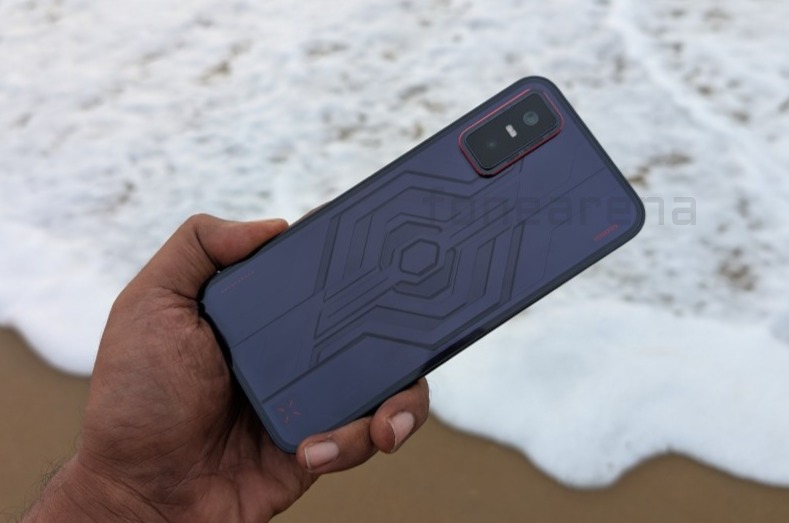
Pricing and Availability
The Infinix GT 30 Pro is priced at Rs. 24,999 for the 8GB + 256GB and the 12GB + 256GB model costs Rs. 26,999. There was a special launch offer that further reduced the effective price to Rs.22,999, making its value proposition even more compelling. At this price point, it solidifies its position as a true “killer phone” in its segment.
The phone is available from Flipkart, Infinix India online store and offline stores.
Pros and Cons
Pros
- Class-leading gaming performance with the Dimensity 8350 Ultimate.
- Superb thermal management with a large vapor chamber.
- Bright, fluid 144Hz AMOLED display with 2160Hz touch sampling.
- Fast LPDDR5X RAM and UFS 4.0 storage.
- Unique “Cyber Mecha” design with customizable LED lights.
- Genuinely useful and responsive console-style gaming triggers, amazing haptics.
- Clean and smooth software (XOS 15) with a good update promise.
- Surprisingly capable 108MP main camera for still photography.
- Excellent battery life with versatile charging options (45W wired, 30W wireless, bypass).
- Comprehensive feature set including NFC, IR Blaster, and FM Radio.
- Full accessory package included in the box.
Cons
- Main camera lacks Optical Image Stabilization (OIS).
- Occasional stutter during high-resolution 4K media playback.
- Plastic build is prone to fingerprints and smudges.
- Macro camera performance is merely average.

